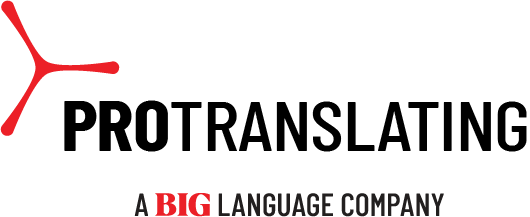The internet has opened up opportunities for companies to reach new customers overseas. However, the language question also needs to be addressed to maximize the potential for international expansion. This blog will teach you why language is the key to global growth.
From local employee onboarding to regulatory compliance, there is a long list of urgent and often complex topics to address when expanding internationally before the subject of language even arises. Yet language plays a crucial role in all forms of business operation both domestically and internationally, from legal and compliance to HR, contracts, content and digital marketing, and beyond.
How you communicate with customers, employees, suppliers, partners, and other stakeholders is key to a company’s success in every industry, whether that communication relates to your brand ethos, corporate vision, range of services, or contractual terms. The challenge for organizations is to translate the approach that has worked so successfully in the local market and language to a wider audience—and to do so in languages and cultures that the core team may not speak or understand.

Translation, Localization, and Transcreation: What is the Difference?
While design also plays a vital role in building brand equity, the language you use to address, entice and inform your target audience lays the foundation for customer loyalty and business growth. However, the language that you may use to present your brand or its products or services in English may not “automatically” work in your target markets even after translation. This is where localization and transcreation can come into play.
Broadly speaking, translation substitutes one language for another by replacing words or text with the equivalent phrasing or terminology in the target language. Localization takes this one step further by transforming the content and messaging from one language to another, including converting U.S. English to British English or Spanish between Spain, Mexico, or another Spanish-speaking country or region, for example. Transcreation (or “creative translation”) takes the process further still, by adapting the entire concept of the content to be culturally sensitive and commercially successful in the target market.
In other words, translation provides a local language version that is close to the words as originally written, localization makes certain the content is in sync with the expectations of the local audience, and transcreation ensures the underlying messages behind individual words ring true to customers from other cultures in their native languages.
How to Develop a Language Strategy For Your Business
Any business considering expanding overseas should ideally consider language at the outset. Fortunately, it is never too late to get started even if international operations have already begun.
Step 1—Set Your Priorities: Not all languages or markets will be equal. By assessing opportunities and scaling accordingly, you will be able to deliver the most cost-effective language strategy for each target geography and local audience. This applies to all industries, whether you work in regulated sectors, such as healthcare, insurance, or education, or provide non-regulated services, such as media, retail, or travel and entertainment.
Step 2—Identify Content: Consider all the different types of content used by your business, from customer-facing materials to documents and data used by HR, legal, and compliance teams. By gathering source materials of all content types and formats first, you will be better able to decide which content to translate and localize/transcreate—and establish a realistic production timeline.
Step 3—Find the Right Partner: Your instinct may be to rely on your local teams to provide translated and localized materials or you may not even be aware that there is an entire industry of Language Service Providers (LSPs) providing services to companies just like yours! By outsourcing language tasks to a specialist LSP, like BIG Language Solutions, however, you can ensure high-quality and timely translations of content marketing, websites, legal/compliance, IP, eLearning materials, and more. Make sure you choose an LSP who can support you at every stage of your language journey. That should include design, formatting, and multimedia capabilities, not simply language skills.

Language helps companies to expand into foreign markets effectively but to fulfill your business’s potential for growth, you also need to ensure content is appropriately localized too. By working with a specialist LSP, you can align your language strategy with your overall business objectives, achieve compliance with relevant laws and regulations, and ensure your brand resonates with your target audiences.
To find out more, contact us today.






